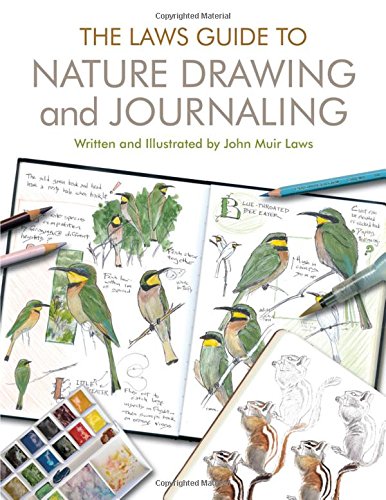Stop - Look - Listen
How My Granddad’s Game Taught Me to See Nature
The Sawtooth Range, Idaho. Image: ©SStrickler⎮Dreamstime.com
LES MEDLEY, PUBLISHER, DESTINATION: WILDLIFE
By Les Medley
Les Medley spent much of his early life on his Granddad’s apple farm in Iowa. There are chores on a working farm that are just big enough for a little boy to handle, they grow as he does. After chores and between seasons, the two ‘men’ explored the world around them. Questions were answered in field trips rather than words. Some lasted hours, some days or longer. The lessons helped inform Les’ life’s path.
✍︎ Editor’s Note: We first ran this story back in 2018, but this game might be just what we need right now to reconnect with nature and ourselves in this moment of pandemic induced distancing.
STOP-LOOK-LISTEN
The old man glided up the trail without a sound. His gaze constantly travelled - over the stands of grand fir trees, the stream beside the trail, the peaks in the distance, and me. Every few minutes, his attention would focus on something, and he would wordlessly point it out. As the clock moved, we had been walking less than an hour; as Grandpa measured time, it was a “bit”; for a six-year old, it seemed like an eternity.
Suddenly he stopped and looked down at me. “Pick up your feet,” he said. He then turned and continued up the draw. Grandpa did not waste words. But I was getting tired, and the day was getting warmer. When my feet scraped the ground again a few minutes later, he again stopped and turned. He stood motionless as he sized me up. He finally spoke, “Let’s play Stop – Look – Listen.”
Northern Goshawk - large, fierce, & secretive.
Image: ®Paulreevesphotography⎮Dreamstime.com
Grandpa found a comfortable place under a hemlock tree and explained the rules. We had to be very quiet for at least five minutes. We would remember everything we saw or heard, and share our lists after the five minutes were up.
The forest was dead still except for the breeze whispering through the hemlocks. But within a few minutes, life had returned to the forest. Birds began singing, a red-tailed chipmunk scampered across the trail, and a northern goshawk glided through the trees across the stream.
We compared notes after a few minutes; Grandpa saw much more than me.
We continued to play the game for the next 23 years: summer vacations, family gatherings, and visits while I was on leave from the Army. The last time we played was in Hells Canyon; as I led the way up the trail I heard his foot scrape the ground.
The last walk with Granddad was in Hells Canyon, Washington. Image: ©Zrfphoto⎮Dreamstime.com
Stop – Look – Listen
Let’s Play
The game is as simple as it sounds. By being still and silent, the natural environment around you will come back to life.
Stop-Look-listen. Even adults will be amazed at the usually un-noticed life all around like this yellow pine chipmunk lunching on seeds. Give yourself, and your kids, a treat. Take a pause. Image: ©PNWNature⎮Dreamstime.com
Select an amount of time to sit. The minimum should be two minutes; the maximum depends on the age of the children and their attention span. Five minutes makes a good first game. Pass out sheets of paper, and have everyone fold it in half. On one side, have everyone list all of the living things they see. Do not forget the trees and plants. On the other side, list every sound they hear.
Once the time is up, compare notes. Talk over what everyone saw, and heard. Do not worry too much about exact identification. You can always look up birds, animals, and insects later.
If you want to expand the game, use the back of the paper to list animal “sign” that they notice.
This can include feathers, tracks, animal droppings, and insect tracks. Also use the back side to list where you stopped and the weather conditions. List not only the geographic location, but the details: next to a stream, in the shade, in a deep valley.
Tips to Make the Game More Fun
The game helps to develop observation skills, connects kids to nature, rests tired little feet on a long hike - and can be played in the backyard or a quiet spot in a city park. Image: ©HANNAH BENET
The game can be played any place you want (or need) to stop. It does not need to be pristine wilderness; you will be surprised how many living creatures are in your local park or backyard.
Choosing a place in the shade will make the game more comfortable, and small wildlife likes the shade, too.
Locations near water will usually have the most wildlife.
The game makes a good reason to take periodic breaks on a long hike.
Quarantine idea: Playing in the backyard? Go to the same spot at different times of the day or early evening. Note what different sounds, smells, bugs or little animals you see. Take pictures to compare.
To experience the most wildlife, encourage everyone to use a few simple rules:
Be as quiet as possible.Be as still as possible.
If you have to move, be slow and smooth.
Use your ears. You will often hear wildlife, especially birds, before you can see them.
A Family History of Special Moments
You can save the sheets in a binder to recall family outings or start a “naturalist’s notebook” for the budding zoologist in the family.
Away from the noise and intrusions of everyday life, nature creates an opportunity for bonding and discovery. Image: ©PAha⎮Dreamstime.com











